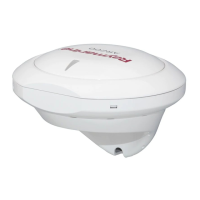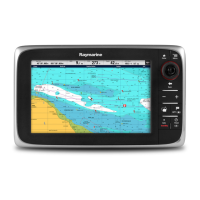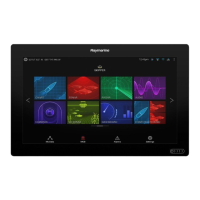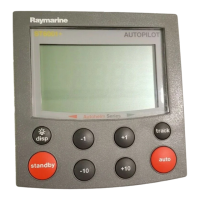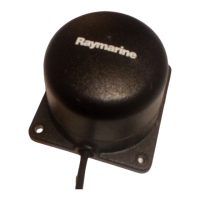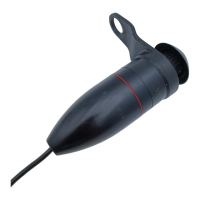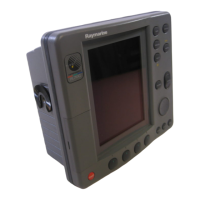2.SelectShallowsothatOnishighlighted.
SelectingShallowwillswitchbetweenOnandOff.
3.SelectShallowLimit.
Theshallowlimitnumericadjustcontrolis
displayed.
4.Adjustthesettingtotherequiredvalue.
5.SelectOktoconrmthenewvalueandclosethe
numericadjustcontrol.
Note:TheShallowLimitcannotbesettogreater
thantheDeepLimit.
15.20Frequencytuning
Thefrequencyisdependentonthesonarmodule
andtransducerinuse.Whenusinganon-CHIRP
sonarmoduleoraCHIRPsonarmodulethatis
operatinginnon-CHIRPmodethenthetransducer’s
frequencycanbemanuallyne-tuned.
Theadvantagesofbeingabletotunethefrequency
include:
•Optimizationforparticularspeciesofshand
waterconditions.
•Avoidinginterferencefromothersonaroperating
nearby(atthesamefrequency).
•Useofwideornarrowbeamonaparticular
transducer.
TraditionalandLegacyfrequencytuning
Thefollowingfrequencytypesareavailableon
LegacyandTraditionalsonarmodules:
•Auto—Whenoperatinginautomaticno
ne-tuningisneededasthesystemwillsetthe
frequencyautomaticallytosuityourtransducer’s
operatingconditions.
•Lowerfrequencies—(e.g.50kHz)—Produces
awidesonarbeamandpenetratethewaterwell.
Lowerfrequenciesprovidealowerresolution
imagethatmaynotbeasgoodatdetectingsmall
sh.Uselowerfrequenciesifyourequirealarge
coveragebeneathyourvesselorifyouareindeep
water.
•Higherfrequencies—(e.g.200kHz)—
Producesanarrowbeamandproduceahigh
resolutionimage.Theyaremostusefulin
shallowerwater(upto1000ft)andathigher
speeds.
Thegraphbelowdepictsne-tuningofaTraditional
orLegacysonarfrequency(from–50%to+50%).
Low High
Sensitivity (dB)
Frequency
-50% +50%
D12574-2
1
2
3
1.Tuningrange
2.Transducercharacteristics
3.Operatingfrequency
CHIRPfrequencytuning
Thelistbelowprovidesdetailsofthefrequencytypes
availablewhenusingaCHIRPsonarmodule.
•Auto—Whenoperatinginautomaticno
ne-tuningisneededasthesystemwillsetthe
frequencyautomaticallytosuityourtransducer’s
operatingconditions.
•Lowfrequency—non-CHIRPmode(e.g.50kHz)
—Producesawidesonarbeamandpenetrate
thewaterwell.Lowerfrequenciesprovidealower
resolutionimagethatmaynotbeasgoodat
Fishnderapplication
227

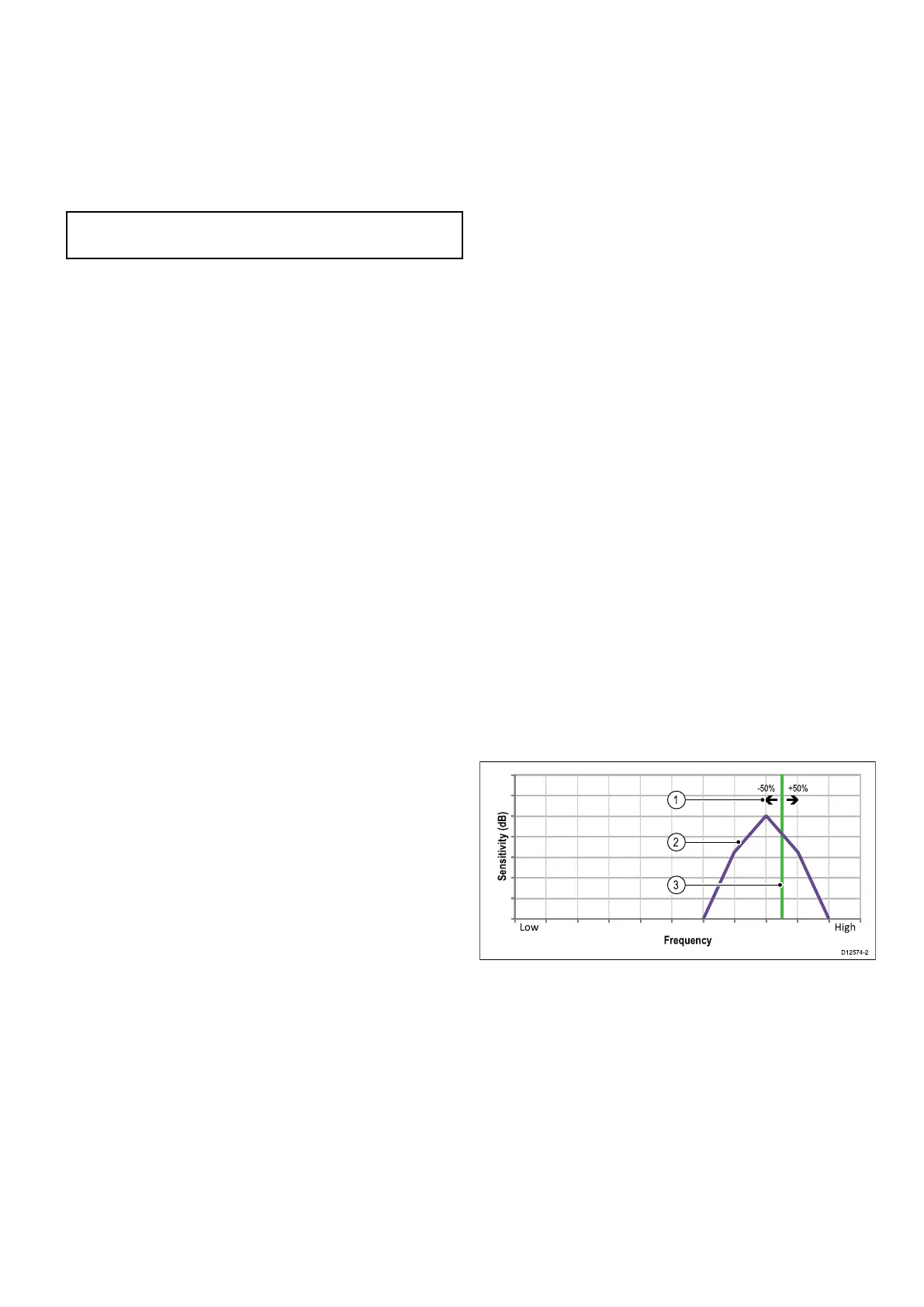